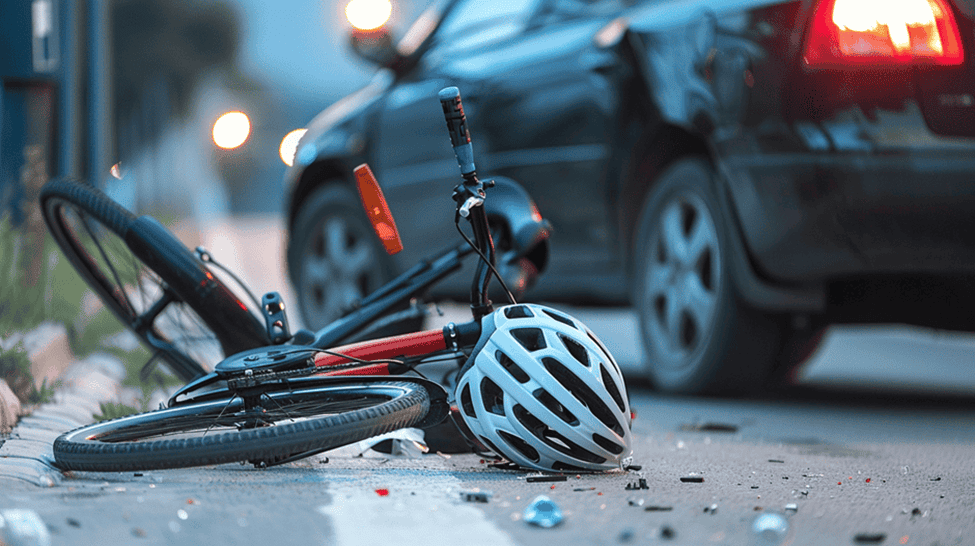8730 Wilshire Boulevard, California 90211
Get Help Now
8730 Wilshire Boulevard, California 90211
Get Help Now

The first thing to know is that, for the most part, these incidents are not accidents. In 2016, the Associated Press instructed its writers to refer to vehicle collisions as “crashes” instead of “accidents,” at least in most cases. The A-word implies that the incident was unavoidable and no one, including the tortfeasor (negligent driver), was responsible for it. Several other governments and media outlets followed the AP’s example.
Instead, driver error causes about 98 percent of the bicycle wrecks in California. Operator impairment and aggressive driving are the two most kinds of driver errors. Generally, these things are negligence, which is a legal term for a lack of care. If that’s the case, compensation is available.
This compensation is not there for the asking. Insurance companies have gangs of lawyers, many of whom charge more than $2,000 an hour, whose only job is to deny fair compensation to victims. In contrast, a Los Angeles personal injury attorney only has one job, which is to ensure maximum compensation for victims.
Bicycle Crash Injuries
When a 4,000-plus pound car or truck collides with a bicycle, many of which weigh less than twenty-five pounds, things usually end very badly for bicyclists. Some of the serious injuries these victims sustain include:
These injuries are even worse if, as is often the case, the victim is a small child or other vulnerable person.
Building a Claim
Speeding, distracted driving, and failure to provide a buffer are the leading causes of bicycle crashes in SoCal. All three of these driving behaviors, or rather misbehaviors, constitute negligence.
Excessive velocity increases the risk of a collision and the amount of force in a wreck. Speed decreases reaction time and increases stopping distance, which is the distance a vehicle continues traveling after a tortfeasor applies the brakes. Furthermore, speed transforms minor fender benders into serious injury collisions.
Nationwide, distracted drivers cause tens of thousands of crashes a day. A bicycle’s small size and slow speed further contributes to the problem. Drivers who are only half watching the road usually only pay attention to large objects, like other four-wheel vehicles, and fast movement, like a changing traffic light.
To address the lack-of-buffer issue, California now requires motorists to maintain at least a three-foot distance between themselves and bicycles. Many drivers don’t pay attention to this law, like they don’t pay attention to bicyclists. Additionally, this law is almost impossible to enforce, a fact that further encourages motorists to break it.
If a tortfeasor violates California Vehicle Code Section 21760 (the three-foot law), and that violation substantially causes a crash, the tortfeasor could be liable for damages as a matter of law. The same thing applies to speeding and distracted driving, which are against the law in some situations.
Normally, however, a Los Angeles personal injury attorney uses the ordinary negligence doctrine to obtain compensation for bicycle crash victims. Speeding, distracted driving, and tailgating always violate the duty of reasonable care, no matter what the law says.
Bicycle Helmets
There is some question about whether helmets protect victims. Evidence suggests that when motorists see riders wearing helmets, the motorists subconsciously assume the victims could survive crashes, so the drivers take unnecessary risks. In contrast, when motorists see helmetless riders, the drivers use more caution.
Nevertheless, California law requires bicyclists under 18 to wear helmets. Regardless of the rider’s age, the failure to wear a bicycle helmet could be used against the victim in court. VC Section 27315(i) allows jurors to consider helmet non-use as evidence of comparative fault. Unprotected victims could thus be responsible for their own injuries.
However, it’s not that simple. An insurance company lawyer must prove that the failure to wear a helmet, as opposed to the tortfeasor’s negligence, substantially caused injury. As outlined above, that’s usually difficult to prove, even if the victim sustained a head injury.Injury victims are usually entitled to substantial compensation. For a free consultation with an experienced Los Angeles personal injury lawyer, contact the Law Offices of Eslamboly Hakim. Lawyers can connect victims with doctors, even if they have no insurance or money.
Credit: Photo on Freepik
Tag: